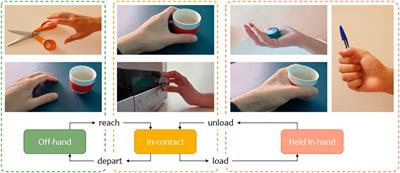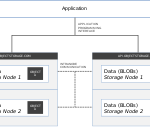October went fast, full of news and packed with interesting robotics applications. This month certainly doesn’t need an intro, so we will let the news take all your attention.
ROS CVE alert- ensuring security for robotics
Early in October 2021, Open Robotics registered a CVE security vulnerability that affects ROS Kinetic, Melodic and Noetic. CVE stands for Common Vulnerabilities and Exposures, and it’s an international system that provides a method for publicly sharing information on cybersecurity vulnerabilities and exposures. This specific CVE affects ROS users and their security for robotics.
If you are working with any of these ROS distributions, act now. You can find information on what you should do here.
Open-source robotics events – ROS Industrial Europe
The ROS Industrial consortium for Europe is organizing the last conference of the year, with a two-day event that will bring together the ROS-Industrial community to discuss new development topics as well as give newcomers and interested parties an overview of the software, activities and benefits.
The first day (December 1st) will focus on more high-level, business aspects of ROS, and is perfect for newcomers and interested parties. The second day (December 2nd) is dedicated for the community to present, explore and exchange information about new developments and planning the community’s roadmap.
Head here to register!
Autonomous mobile robots – but on the water
Autonomous vehicles are not yet available for the public (no, it doesn’t count if there is a driver on the loop for those of you thinking about the California based taxi – or any other semi-autonomous taxi). AI has only taken activities that do not involve significant risk from their inference or operate with a human on the loop. Driving among pedestrians and other vehicles is too complex.
But what if we look for places where that complexity and risk are lower? This is why you see growing adoption of autonomous mobile robots inside manufacturing lines and warehouses, airports, and agricultural fields. So obviously, lakes and rivers fall into this category.
MIT has been working on these for years, and they will be introducing this tech to the canals of Amsterdam as cargo shuttles and taxis. MIT’s roboats are battery-powered and fully autonomous, capable of navigating through Amsterdam’s canals using its sensor array (lidar along with cameras and ultrasonic sensors). Besides transporting people, they will also be used to clean the channels and also form floating platforms.
By taking the tech into a more controlled environment – relatively low speed and no pedestrians – it is easier to approve the use of the technology. However, new challenges appear, such as different interpretations for weather conditions, other boats, safety, etc.; but the complexity is still significantly lesser.
Want to see what is inside this robot? Have a look here. It obviously involves ROS.
Drones saving dogs
I’m not a dog person (not a cat person either) but this news is worth sharing. Not because social media loves pets, but because we have all recently seen condemnable uses of robotics technologies in the past few days. We want to show you what robots are and should be capable of doing, and what better than dogs to show this.
The Cumbre Vieja volcano on the Spanish island of La Palma has been erupting for eight weeks. This caused the evacuation of 7,000 people. But many pets were left behind, trapped in walled-off yards without food or water. Some of them have been rescued, thanks to the drones that have been monitoring the zone. But some of them are in areas too dangerous to send humans. So, drones are being used to drop food and water to some of these animals! This is a great use of technology and shows how it allows us to quickly respond.
But that is not all, Aerocamaras, a drone company got permission to attempt a rescue. This is usually forbidden by law, but due to the circumstances, they were able to get the approval. While the company tested the use of a large drone equipped with a net, it was not used at the end.
This sets a good precedent for how rescue organizations can act in these natural disasters. It also shows what the technology is meant to be used for, reminds us of its potential, and might inspire several companies.
Just put some legs to a drone
And it will skateboard, slackline, and make airborne hops with Olympic-worthy landings. At Caltech’s Center for Autonomous Systems and Technologies (CAST), researchers have been developing a new robot called now LEgs ONboARD drOne, or Leonardo (acronym respect). It combines a bipedal robot with a drone-like thruster system. The drone allows Leo to balance, improve its agility, and leap tall leaps in a single bound.
But LEO is not only about jumping, it is also about sustained flight. To achieve this, Leo now has much lighter weight legs driven by lightweight servo motors than its previous version. It also includes four tilted propellers that enable altitude control in all directions. This sustained flight allow the robot to perform ridiculous movements and task, have a look:
Look how effortless the robot deals with dynamic balancing and traversing large changes in height. This multimodal hybrid robot weighs 2.5 kg, is 75 cm tall, and uses down 544 watts, of which 445 watts go to the propellers and 99 watts are used by the electronics and legs. When flying, LEO’s power consumption almost doubles. This is one of the challenges for the development team. Its battery life is good for around 100 seconds of flight or 3.5 minutes of walking. Remember, it has to be light to fly.
All in all, we cannot wait to see what it will look like. Here is just a render of what LEO could become.
Open source robotics – video news
Don’t miss our new robotics news video – with more videos and more news.
And if you want to feature your robotics application, just send us an email to robotics.community@canonical.com
Open-source robotics – tutorial
This month we bring two tutorials to help onboard developers and enthusiasts alike.
The first tutorial from PickNik will take you through MoveIt 2 in a video series of five episodes.
The second tutorial will show you how to navigate using preferred lanes with the ROS 2 Navigation Stack. Here is what you will achieve:
So schedule some time for you to keep learning – and don’t forget to thank the authors; thank you for your contribution.
Stay tuned for more robotics news
As always, we would love to learn from you. So send us a summary of your robotics innovation and project to robotics.community@canonical.com and we will share it in our next robotics newsletter or monthly video. Thanks for reading!
Discover more from Ubuntu-Server.com
Subscribe to get the latest posts sent to your email.




